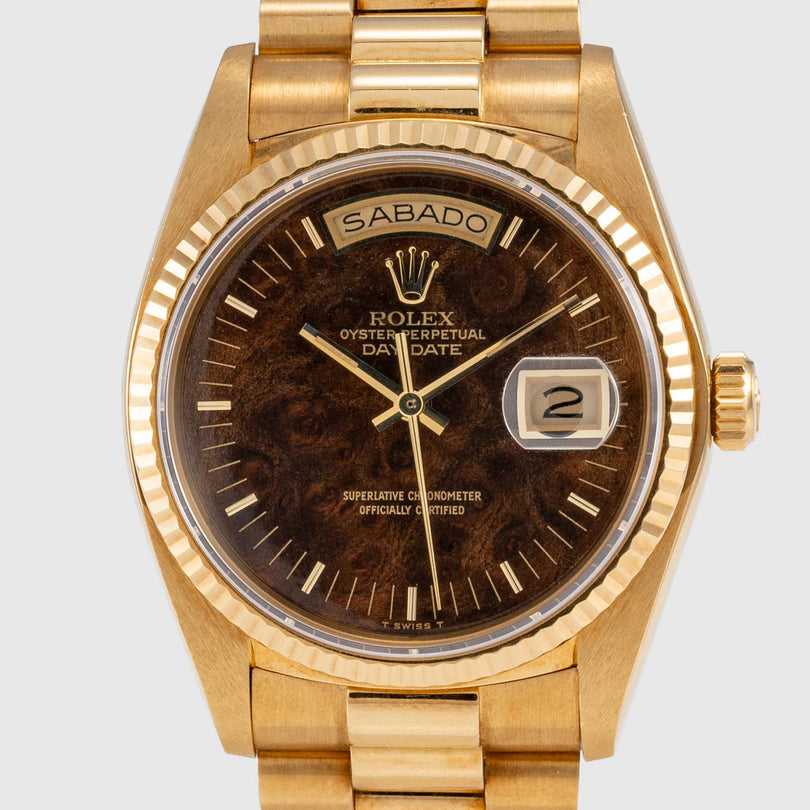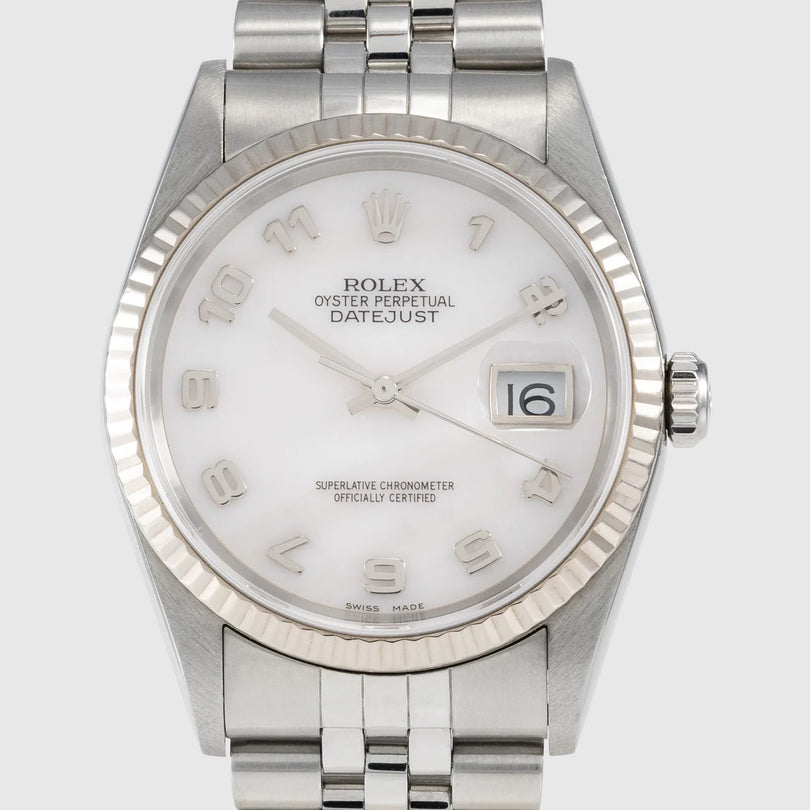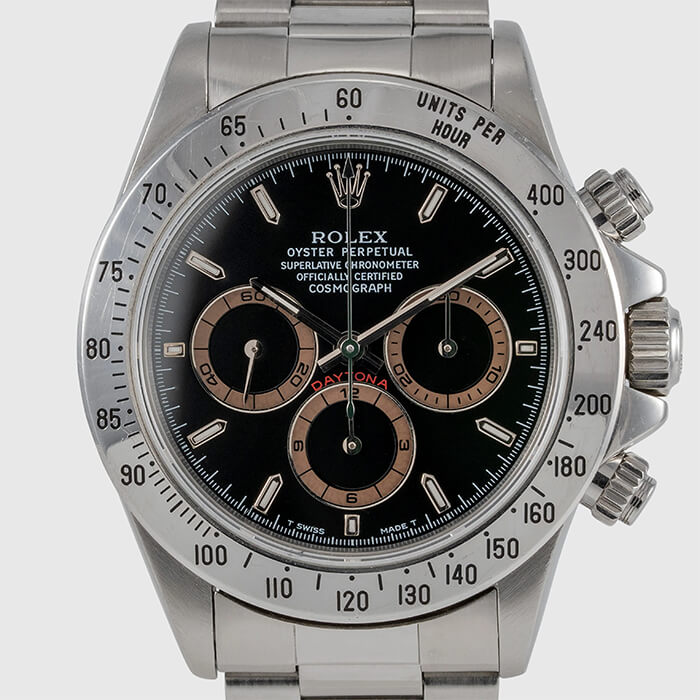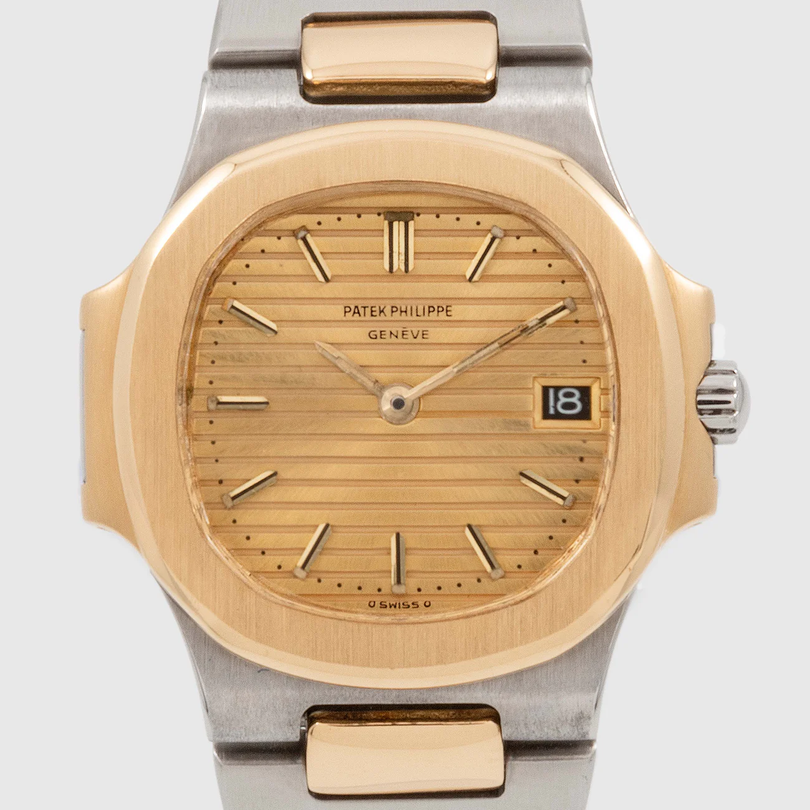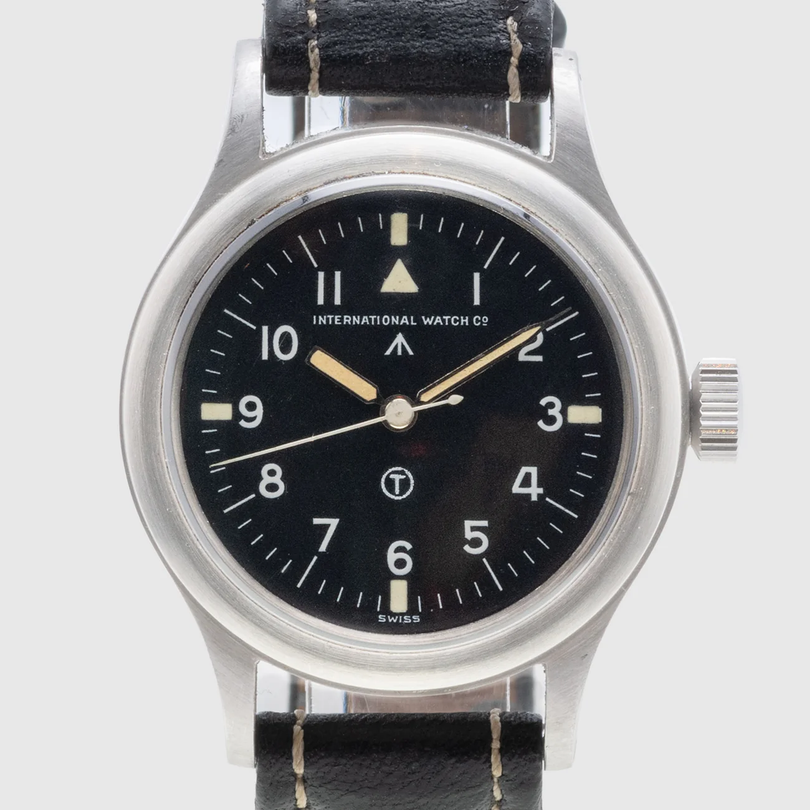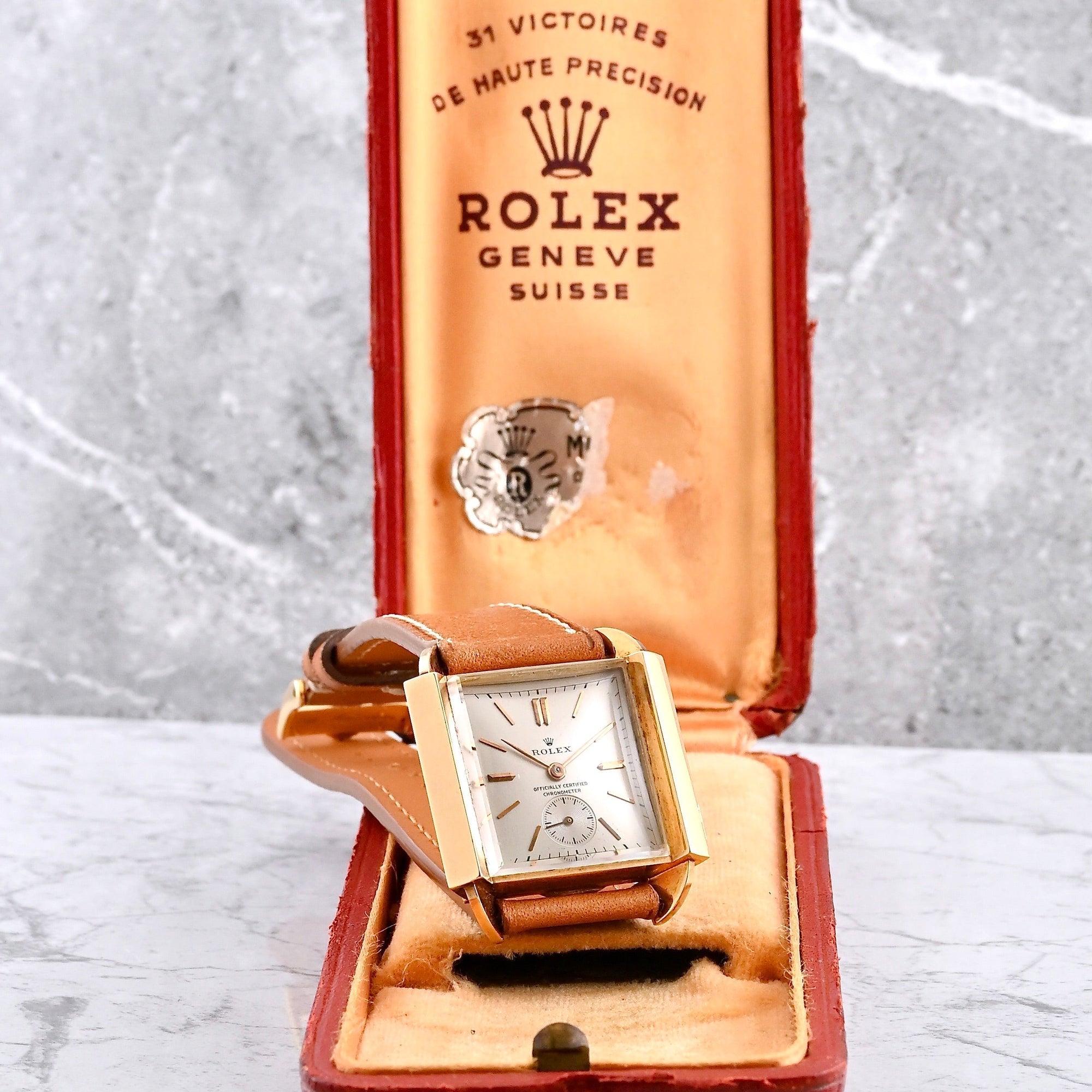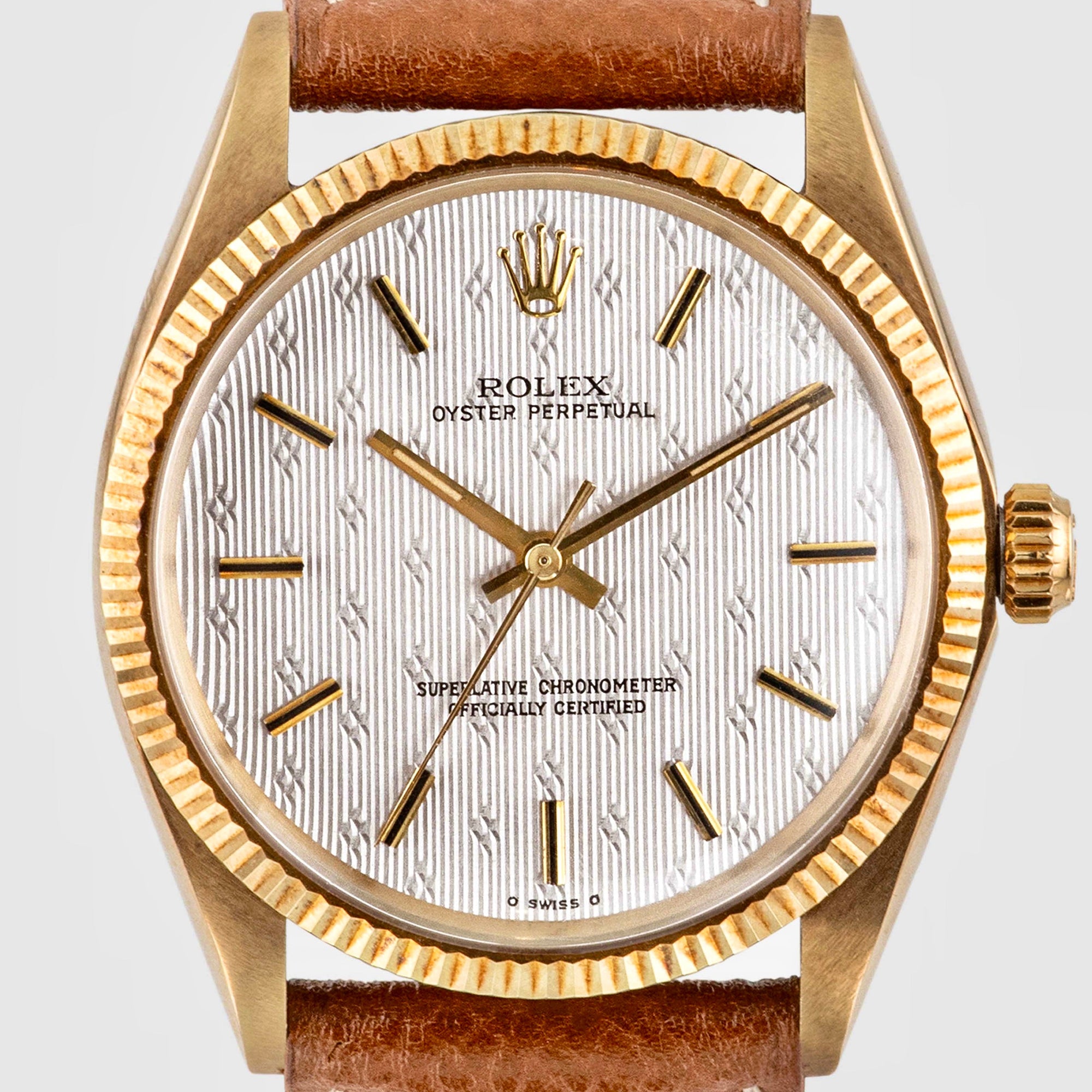There’s a unique thrill in vintage watch collecting. It’s not just about the mechanics or the design, it’s about owning a fragment of history, an object that has travelled through decades and now finds a place in your personal story.  Whether it accompanied its owner through the space, the deep sea or rested under a tailored cuff in a parisian café, your first vintage watch will be more than a timekeeper. It will be a traveling companion, a statement and often the starting point of a lifelong passion.
Whether it accompanied its owner through the space, the deep sea or rested under a tailored cuff in a parisian café, your first vintage watch will be more than a timekeeper. It will be a traveling companion, a statement and often the starting point of a lifelong passion.
The world of vintage horology is rich, fascinating, and complex. Entering it requires curiosity, patience, and discernment. Knowing where and how to begin will determine not only the quality of your first purchase, but also the foundation of your collecting philosophy.
Settle in and join us as we uncover the “secrets” behind this, often life-long, research!
Start With Why: Defining the Collector You Want to Be
Before entering the world of vintage watch collecting, it’s essential to understand what truly draws you to collecting. Some are captivated by design, whether the refined proportions of mid-century minimalism or the expressive forms of particular historical periods.
Others focus on technical mastery, seeking movements and complications that reflect the pinnacle of mechanical craftsmanship.
 For some, the appeal lies in personal connection, such as a model once worn by a family member or associated with a significant moment.
For some, the appeal lies in personal connection, such as a model once worn by a family member or associated with a significant moment.
Clarifying this motivation will guide every subsequent decision. It will help you navigate the vast number of available pieces, interpret the advice within specialist circles, and maintain a consistent direction in the face of a complex and competitive market.
This self-awareness is equally important when choosing your first acquisition. While many are naturally drawn to iconic models, it’s worth remembering that these references demand particularly careful consideration. For watches with such prominence, factors as condition, originality, provenance, and documented service history can have a substantial influence on both value and collectability.  An informed and measured approach ensures that appreciation for these icons is matched by an understanding of what makes them worthy of their “name”.
An informed and measured approach ensures that appreciation for these icons is matched by an understanding of what makes them worthy of their “name”.
Regardless of the model, the principles of vintage collecting remain consistent. Originality should be valued over cosmetic “perfection”. A dial that appears flawless may have been refinished, erasing much of its authenticity. Cases that seem overly bright may have lost their original lines through excessive polishing.  Learn to love honest wear, the patina, the quirky fonts, the faded lume plots, and create your own taste!
Learn to love honest wear, the patina, the quirky fonts, the faded lume plots, and create your own taste!
Where to Buy: A Guide for the First Acquisition
Once the decision has been made, the natural question arises: where should the first watch be purchased? The vintage market offers a variety of possibilities, each with its own peculiarity, advantages, and considerations. For someone approaching this world for the first time, understanding these nuances is essential to move with confidence.
Let’s discover some of the best places to start your hunt.
Boutiques
 Established boutiques often provide the most reassuring environment. Renowned dealers, whether in Europe, the United States, or the Middle East, distinguish themselves through carefully curated selections and rigorous attention to quality and rarity. Acquiring a first watch in such a context is an introduction to expertise, where provenance, condition, and history are explained with clarity.
Established boutiques often provide the most reassuring environment. Renowned dealers, whether in Europe, the United States, or the Middle East, distinguish themselves through carefully curated selections and rigorous attention to quality and rarity. Acquiring a first watch in such a context is an introduction to expertise, where provenance, condition, and history are explained with clarity.
 Prices may reflect the level of curation, but for a new collector the reassurance, transparency, and guidance offered are of lasting value.
Prices may reflect the level of curation, but for a new collector the reassurance, transparency, and guidance offered are of lasting value.
Online Platforms
Online platforms have also become central to the vintage watch landscape. Marketplaces such as Chrono24 make an extraordinary range of models accessible and allow buyers to develop an understanding of market values and availability.
They provide tools for comparing pieces and evaluating sellers, but they reward patience and diligence.  A careful review of photographs (even 100 photos and videos are not good enough if you are not able to evaluate them), the request for additional details, and a close look at the seller’s reputation are fundamental steps for anyone beginning through this channel. One important point that is often forgotten and neglected is the return policy and warranty.
A careful review of photographs (even 100 photos and videos are not good enough if you are not able to evaluate them), the request for additional details, and a close look at the seller’s reputation are fundamental steps for anyone beginning through this channel. One important point that is often forgotten and neglected is the return policy and warranty.
Logistics is a critical point here where customs and taxes on both sides can kill a deal, especially if a seller refuses to take a watch back because of customs and taxes he has to pay.
Watch Communities
Equally valuable are collector communities. Enthusiast forums and dedicated groups bring together individuals who combine a passion for horology with direct experience.
Here, watches are often offered by collectors who know their history intimately and who tend to prioritize reputation and transparency.  Beyond the possibility of acquisition, these environments offer education: discussions, archives, and the shared experience of members can help refine judgment and broaden knowledge.
Beyond the possibility of acquisition, these environments offer education: discussions, archives, and the shared experience of members can help refine judgment and broaden knowledge.
Auctions
Auction houses represent another important point of entry. Institutions such as Phillips, Antiquorum, Sotheby’s, Moncaco Legend Group or Christie’s have established themselves in the high-end watch market and offer watches of exceptional quality, rarity and historical significance. For a new collector the dynamics of an auction room can be very exciting.
The in-person bidding, the presence of fees, and the necessity of preparation all require attention. Even auction houses do mistakes and one needs to be diligent and do his homework. Talk to the specialists, to other collectors and compare with other examples of the watch you are looking at.
It is also important to understand the fees. The estimate is only an indication where the watch is set at. Sometimes it reflects the value of the watch and sometimes its a smart tool to get as many bidders in the game.  Very often the result can be a multiple of the estimate destroying you hopes to buy the watch within the estimate. There is a hammer price and then there is the buyers premium that, depending on the auction house varies from 25-30%, a significant chunk of money that will be added to the hammer price.
Very often the result can be a multiple of the estimate destroying you hopes to buy the watch within the estimate. There is a hammer price and then there is the buyers premium that, depending on the auction house varies from 25-30%, a significant chunk of money that will be added to the hammer price.
Last but not least, Auction houses ship watches only at full declaration for customs which means you have another one coming for you.
Curious about how to bid at auctions and make the most of the experience?  Check out our tutorial here.
Check out our tutorial here.
Each of these “avenues” serves a different purpose and offers its own lessons. What matters most for a first-time buyer is not to rush, but to regard the search as both an education and the beginning of relationships that may prove valuable throughout a collecting journey.
The first vintage watch should align with one’s personal motivations and taste, but it should also come from an environment that inspires trust and offers clarity. In this sense, where you choose to buy is as significant as the watch. Buying your first vintage watch should be an experience than ignites a passion rather than a nightmare that will keep you away from watches for a very long time.

Engage, share and ask questions as much as possible and get help to assess the answers! Most of us started with the same ones.
The Golden Rule: “Buy the Seller”
Few lessons are as crucial as understanding the principle of buy the seller. Beyond the watch itself, the relationship you establish with the person or institution offering it will shape both your immediate experience and your long-term confidence as a collector.

A reputable seller is more than a point of transaction, they are a source of knowledge and guidance. The way a watch is presented speaks volumes: precise and well-composed photographs that reveal the case, dial, movement, and caseback.  A description that is detailed, measured, and free from ambiguity and, where available, documentation of servicing or provenance. The clarity of these elements is not only reassuring but it allows you to learn, compare, and begin to develop your own eye.
A description that is detailed, measured, and free from ambiguity and, where available, documentation of servicing or provenance. The clarity of these elements is not only reassuring but it allows you to learn, compare, and begin to develop your own eye.
Equally important is dialogue. A professional seller will welcome questions, explain the characteristics of a piece, and share context that helps you understand its place in horological history. This exchange transforms the act of buying into an opportunity for education.
To buy the seller is therefore to invest in trust as much as in craftsmanship. Building relationships with reputable dealers, established boutiques, or respected auction houses offers more than access to fine watches: it opens the door to mentorship, insight, and the reassurance that your first step into vintage horology is a confident one.
Our Suggestion: 5 Great Vintage Watches To Start
If vintage watches are where your heart is, here are five references that make excellent starting points. They’re historically important, relatively accessible, and each has its own personality.
1. Cartier Tank 2960 – The Understated Classic
 If you're drawn to watches that whisper elegance, the Cartier Tank 2960 is a perfect choice. The steel versions from the 1980s offer a timeless blend of vintage charm and modern wearability. Collectors appreciate its clean lines and historical significance. While not as hyped as some other vintage pieces, it holds its own in design and craftsmanship.
If you're drawn to watches that whisper elegance, the Cartier Tank 2960 is a perfect choice. The steel versions from the 1980s offer a timeless blend of vintage charm and modern wearability. Collectors appreciate its clean lines and historical significance. While not as hyped as some other vintage pieces, it holds its own in design and craftsmanship.
2. Rolex Datejust 1601 – The Timeless Staple
 First released in 1945, the Datejust introduced the self-winding chronometer wristwatch with a date display, setting a design language that remains central to Rolex today. The ref. 1601, with its fluted bezel, cyclops lens, and perfectly proportioned 36mm case, is a classic example. Its timeless design makes it versatile for both casual and formal wear, while collectors often seek out specific dial variations or well-preserved examples, which can influence value and appeal.
First released in 1945, the Datejust introduced the self-winding chronometer wristwatch with a date display, setting a design language that remains central to Rolex today. The ref. 1601, with its fluted bezel, cyclops lens, and perfectly proportioned 36mm case, is a classic example. Its timeless design makes it versatile for both casual and formal wear, while collectors often seek out specific dial variations or well-preserved examples, which can influence value and appeal.
The Datejust 1601 remains an excellent entry point into vintage Rolex, offering historical significance and everyday elegance without the premium of rarer models.
3. Rolex Submariner 5513 – The Dive Watch Icon
 Produced from the early 1960s to the late 1980s, the Submariner 5513 is a true dive watch icon. Its robustness and classic design have made it a collector favorite. Certain dial variations, like “meters first” or tropical patinas, are especially sought after. Condition is key — unpolished cases and original parts retain value best, making this reference both iconic and approachable for new collectors.
Produced from the early 1960s to the late 1980s, the Submariner 5513 is a true dive watch icon. Its robustness and classic design have made it a collector favorite. Certain dial variations, like “meters first” or tropical patinas, are especially sought after. Condition is key — unpolished cases and original parts retain value best, making this reference both iconic and approachable for new collectors.
4. Rolex GMT-Master 16710 – The Neo-Vintage Traveler
 Introduced in the late 1980s, the GMT-Master 16710 combines a dual-time zone function with the durability Rolex is known for. Collectors love its versatility, and the “Pepsi” or “Coke” bezel adds character. It’s a neo-vintage option for those who want a recognizable Rolex with practical functionality and a story.
Introduced in the late 1980s, the GMT-Master 16710 combines a dual-time zone function with the durability Rolex is known for. Collectors love its versatility, and the “Pepsi” or “Coke” bezel adds character. It’s a neo-vintage option for those who want a recognizable Rolex with practical functionality and a story.
5. Tudor Submariner “Snowflake” – The Rugged Beauty
 Produced from the late 1960s to early 1980s, the Tudor Submariner “Snowflake” stands out for its square hour markers and distinctive hands. Reference 9401/0 is particularly collectible, especially well-preserved examples with original parts. Its vintage charm and military ties make it a compelling alternative to Rolex dive watches.
Produced from the late 1960s to early 1980s, the Tudor Submariner “Snowflake” stands out for its square hour markers and distinctive hands. Reference 9401/0 is particularly collectible, especially well-preserved examples with original parts. Its vintage charm and military ties make it a compelling alternative to Rolex dive watches.
Extra note: Keep an eye out for rarities — unusual dials, special editions, or military provenance — as these often have fascinating backstories and strong collectible value.
 With the many combinations of dials, finishes, and metals across these models, the possibilities are virtually endless, ranging from more common examples to ultra-rare configurations, ensuring there’s a watch to suit every type of collector and budget.
With the many combinations of dials, finishes, and metals across these models, the possibilities are virtually endless, ranging from more common examples to ultra-rare configurations, ensuring there’s a watch to suit every type of collector and budget.
Inspired by these classics? Click here and browse our full collection online to see the rare and collectible watches we currently have available.
Conclusions
Your first vintage watch will mark the beginning of your collecting journey, but it may not remain in your collection forever. Preferences evolve, expertise grows, and sometimes a piece that seemed perfect at the start will make way for something that better reflects your taste.
What matters most is not rushing the process. Read, study, handle as many watches as possible, ask questions, and develop relationships with trusted sources. The search itself is one of the greatest pleasures of collecting.
When you finally find that first vintage piece that feels right on your wrist, you will have gained not only an object of beauty but also the experience and confidence to pursue the next chapter of your collection!

